COMPLETE ANALYSIS OF LATERALLY LOADED SINGLE PILE/PIER FOUNDATION
Updated January 19, 2016
$295.00 – $660.00
This product has multiple variants. The options may be chosen on the product page
Return on Investment (ROI) calculator
SoilStructure LATERAL FOUNDATION, version 2 analyses laterally loaded piles. Spreadsheets are hard to preserve and it is time consuming to do all the stability and design checks using in house tools. This Lateral Foundation software calculates the capacity of a single driven pile or a single drilled pier/auger cast pile subjected to:
- Lateral (Shear) Load and
- Bending Moment
- Free Head or Fixed Head
The site soils are often stratified so SoilStructure Lateral Foundation software can handle up to 10 soil/rock layers.
Analysis can be done in SI units or in English units. Supports Window XP/Vista/7/8/10 systems.
Analysis is applicable to both “FIXED HEAD” and “FREE HEAD” pile/pier. (VIEW Lateral Foundation Video)
As a result, you can use Lateral Foundation Software to analyze:
- Solar foundations
- Sign support foundations
- Wind turbine foundations
- And any laterally loaded single pile.
Existing users have designed Auger Cast Piles, Drilled Piers, HP Piles, HSS (Pipe) Piles, CIDH piles, & Composite Piles with Lateral Foundation Program.
This program uses beam-column equations on a beam on elastic foundation approach. This program references Hetenyi, Poulos, R.F. Scott, Kezdi, Bowles, Hull, Young & Budynas, Azizi, and Reese & Van Impe. This is one of the very few program that can handle multiple composite sections along the pile or pier length.
Lateral Foundation software v2 can be used by structural engineers since the lateral subgrade modulus values are “pre-filled” for you based on soil classification and consistency-however a geotechnical report and a soils engineer involvement is highly recommended.
Lateral Foundation software will be a geotechnical engineer’s ally, since structural loadings can be input along with soil layers. Deflection, depth of embedment and induced shear/moment loads are displayed in both tabular and in chart format. The lateral subgrade values can be adjusted to a +/- 30% to account for saturated conditions and/or cyclic conditions.
The deflection chart is the solution of a 4th order differential equation and the bending moment is the solution of a 2nd order differential equation. A 17×17 Matrix needs to be solved with an accuracy of at least 16 decimal places.
Unique only to our Lateral Foundation software are three new features:
(1) Ability to model/change pile material in each soil layer. So if you had a composite pile, you can use for instance a 24 inch diameter (0.6 m) concrete shaft in the upper 5 ft (1.5 m) and then have driven steel or timber or concrete pile below it. Also the user can input E and I values directly so new materials and cracked sections can easily be modeled.
(2) Ability to change the cross section on each soil layer. So you can have tapered or step-tapered piles or piers. You can also analyze performance of new material and new composite piles.
(3) Analysis of induced & allowable lateral soil pressures (not soil reaction) so that you can instantly check that you are not exceeding the allowable passive soil pressures.
This program has been used to design wind turbine piers, sign foundations, piles supporting wharves & retaining walls and on occasion a PhD thesis.
It is priced to be a profitable tool on your desktop from your very first project. You will love the ease of entry and use of standard units. The comprehensive report can be printed on paper or on a PDF format. An upgrade from the “unconstrained IBC formula” and complicated charts meant for just one soil profile. The download version will unlock to a full license once purchased.
![]()
Ex. 5-1 Engineering Design Book Comparison
Sample Screen Shots
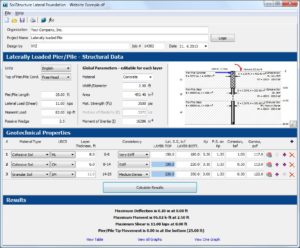 |
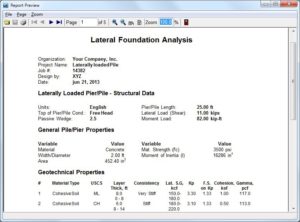 |
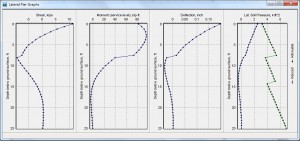 |
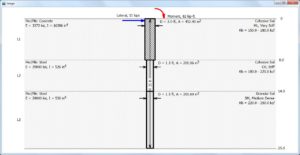 |
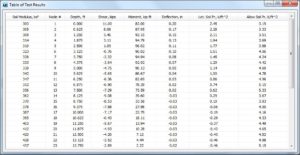 |
|
